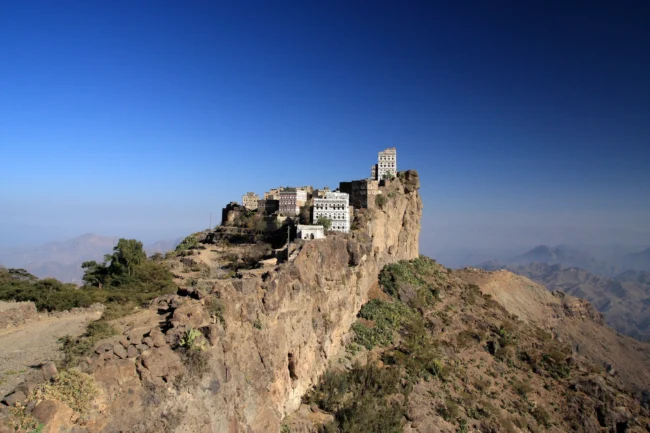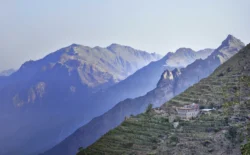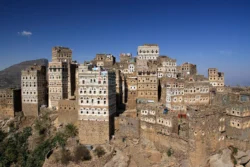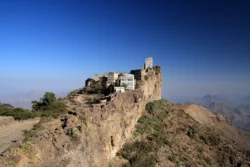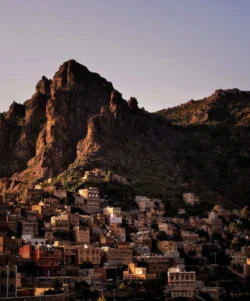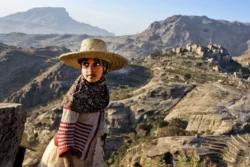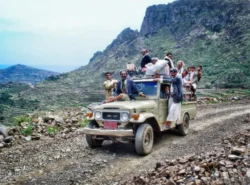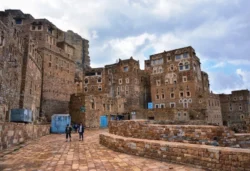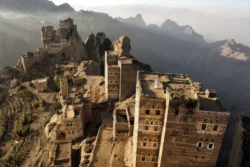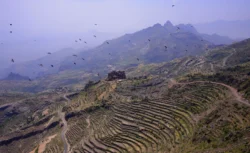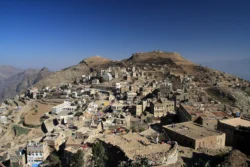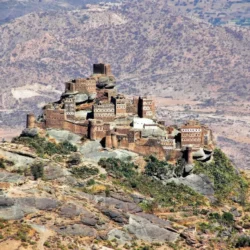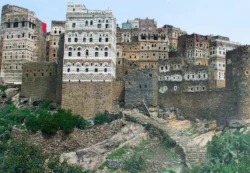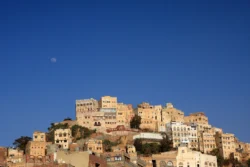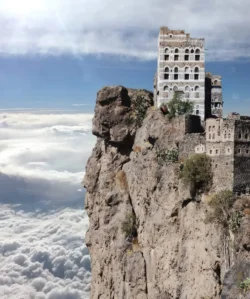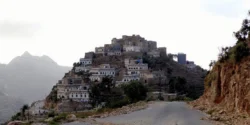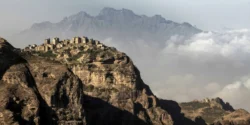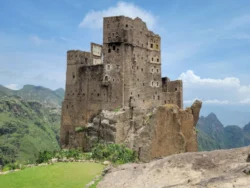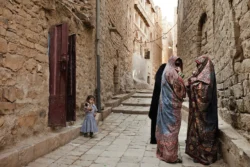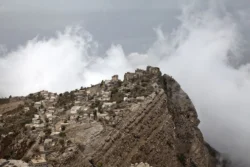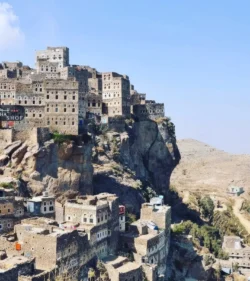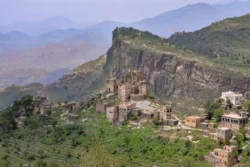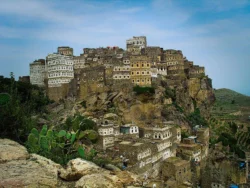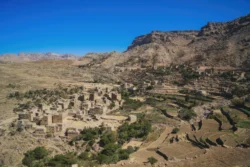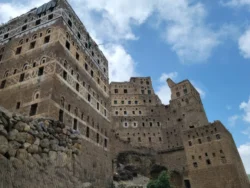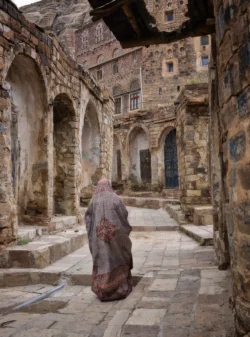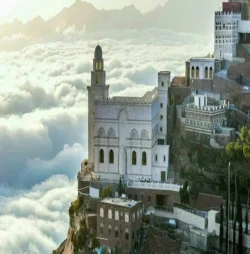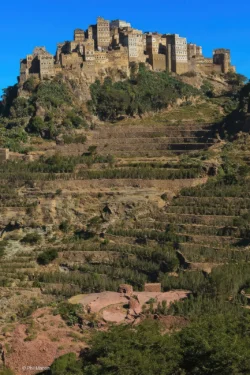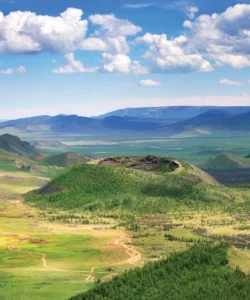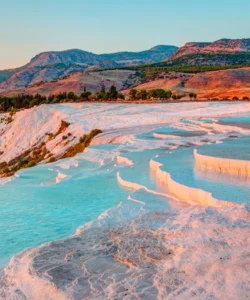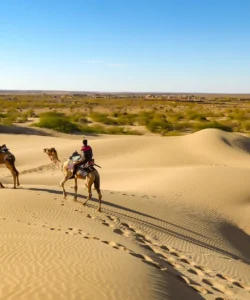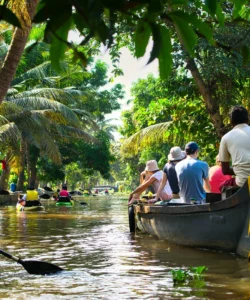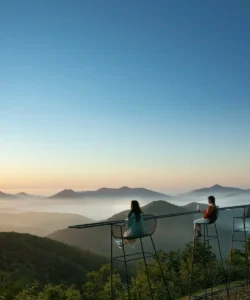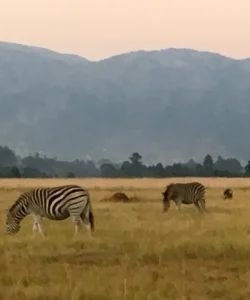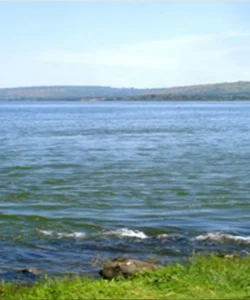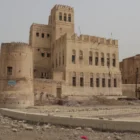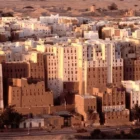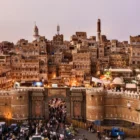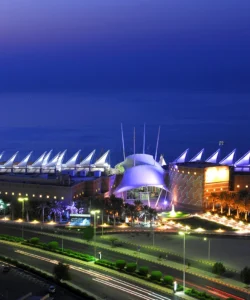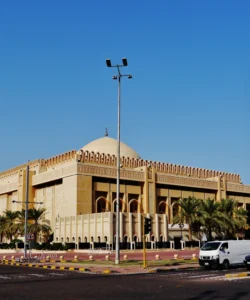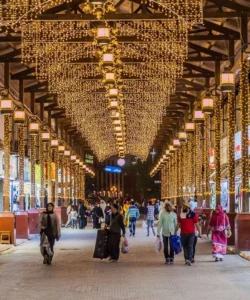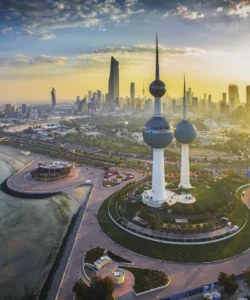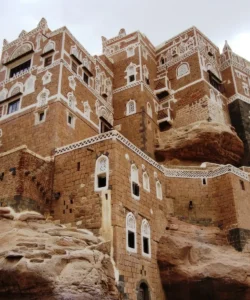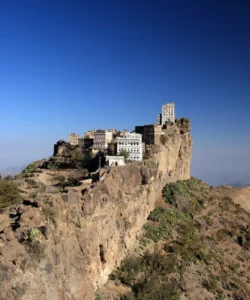The Haraz Mountains are a majestic and strategically important mountainous region in western Yemen, situated between the capital Sana’a and the Red Sea coastal plain of Al-Hudaydah. This area is renowned for its dramatic landscapes of steep cliffs, lush terraced fields, and ancient fortified villages that cling to nearly inaccessible rocky peaks. It served as a stronghold for the Sulayhid dynasty in the 11th century and remains a vibrant cultural area, famous for its coffee and traditional way of life.
Listen to an introduction about Haraz Mountains
Name and Address
- Name: Haraz Mountains (Arabic: جَبَل حَرَاز, Jabal Ḥarāz)
- Address: Western Yemen, approximately 90 km (56 miles) west of Sana’a. The main town in the region is Manakha.
How to Get There
Important Note: Travel to Yemen, including the Haraz Mountains, is currently extremely difficult and unsafe for general tourism due to ongoing conflict and political instability. Most countries advise against all travel to Yemen. The information below is for historical and contextual understanding and is not a recommendation for travel.
- By Air: The closest major airport would be Sana’a International Airport (currently subject to severe restrictions and safety concerns).
- By Road: From Sana’a, the Haraz Mountains are about a 2 to 3-hour drive by taxi or private car to Manakha. Due to security concerns and checkpoints, travel often requires armed escorts and permits, arranged through local fixers or tour operators. Roads can be winding, steep, and some bridges may be destroyed, requiring detours.
- On-Site: The Haraz Mountains are best explored on foot, particularly for hiking between villages. A local guide is highly recommended due to the conservative nature of the area, language barriers (thick local dialects), and the rugged terrain.
Landscape and Architecture
The Haraz Mountains are a striking example of human adaptation to a challenging environment, where architecture and landscape are intricately intertwined.
- Terraced Landscapes: The mountainsides are extensively terraced for agriculture, creating a “green Haraz” with lush fields of alfalfa, millet, lentils, coffee, and qat. These ancient terraces are a testament to generations of human labor and ingenious irrigation systems.
- Fortified Villages: Villages like Manakha and Al-Hajjarah are built like castles, often clinging to rocky peaks. The houses themselves form the defensive walls, with few easily defensible entrances. This architecture served to protect inhabitants from Bedouin attacks.
- Stone and Mud Construction: Buildings are primarily constructed from local sandstone and basalt, integrated so seamlessly into the landscape that it’s difficult to distinguish where the natural rock ends and the village begins.
- “Sky-Reaching Mountains”: The region features peaks up to 3,000 meters (9,800 ft) high, including Jabal An-Nabi Shu’ayb, the highest mountain in Yemen and the Arabian Peninsula.
- Micro-Climates: The diverse topography, altitude, and proximity to the Red Sea create various micro-climatic zones, supporting a rich variety of flora and fauna.
What Makes It Famous
- Fortress-Like Villages: The unique and imposing architecture of its fortified stone villages, seemingly growing out of the mountainsides, is a major draw.
- Terraced Agriculture: The extensive and ancient terraced fields, which transform the rugged landscape into a verdant agricultural marvel, are a defining feature.
- Strategic Importance: Historically, its location between the Tihama coastal plain and Sana’a made it strategically vital, leading to its role as a stronghold for various dynasties.
- High-Quality Coffee: The Haraz region is famous for producing some of the best coffee in Yemen, a significant part of its cultural and economic heritage.
- Traditional Way of Life: Visitors can experience a traditional Yemeni way of life that has been preserved for centuries, with locals known for their hospitality.
- Hiking and Scenery: It offers some of the most magnificent mountain scenery in Yemen, with ideal conditions for hiking and trekking, providing breathtaking views.
- UNESCO Tentative List: The area was added to the UNESCO World Heritage Tentative List in 2002, recognizing its “outstanding universal value” as a mixed cultural and natural site.
Differences from Some Other Attractions
- Integrated Defensive Architecture and Agriculture: Unlike purely defensive structures (like forts) or purely agricultural landscapes, the Haraz Mountains are unique for their seamless integration of fortified villages with extensive terraced agriculture, where the very design of the settlements is driven by both defense and sustenance.
- Living, Traditional Culture: While sites like Shibam are famous for their ancient architecture, the Haraz Mountains offer a more immersive experience of a living, traditional culture that continues to thrive in its ancient villages, with customs and practices largely unchanged for centuries.
- Mountainous Terrain vs. Desert/Coastal: In contrast to the desert landscapes of Wahiba Sands or the coastal cities like Antalya, the Haraz Mountains offer a distinct high-altitude, rugged mountainous environment, with a cooler climate and unique flora.
- Emphasis on Hiking Between Villages: The primary mode of exploration is often hiking between its numerous, visually distinct villages, offering a more intimate and physically engaging experience than sites explored primarily by vehicle.
Haraz Mountains Photos:
